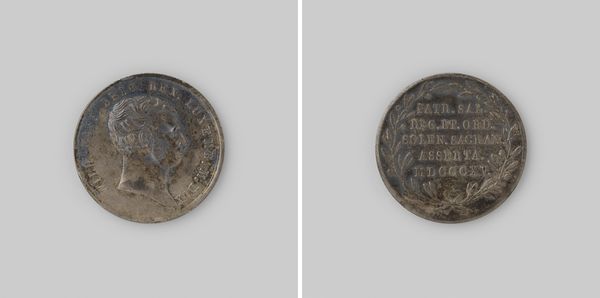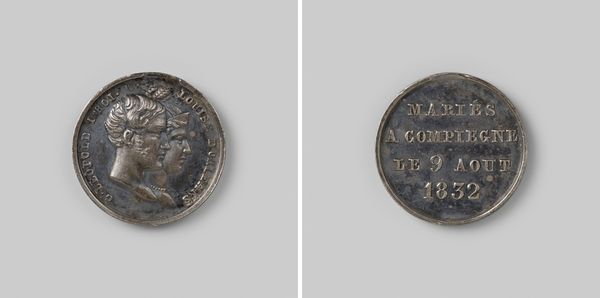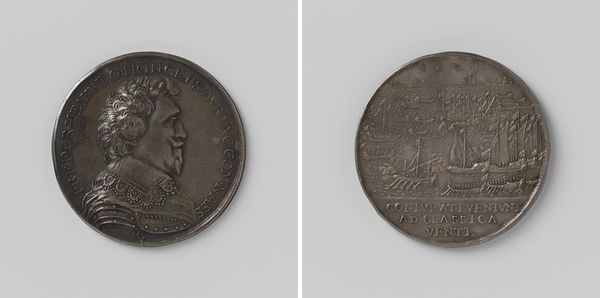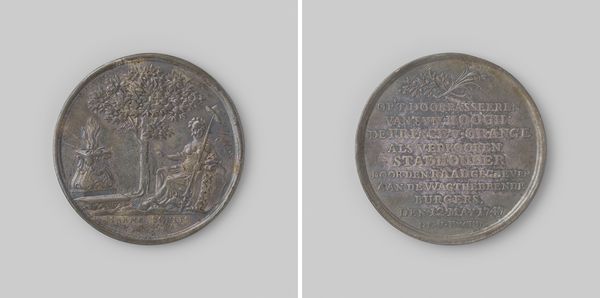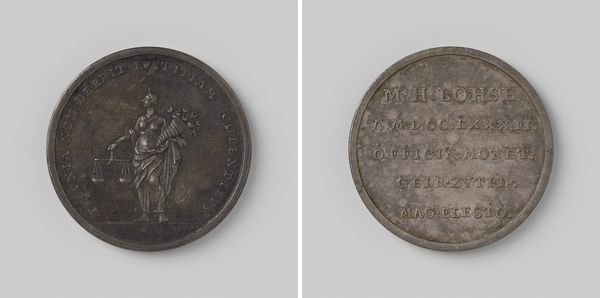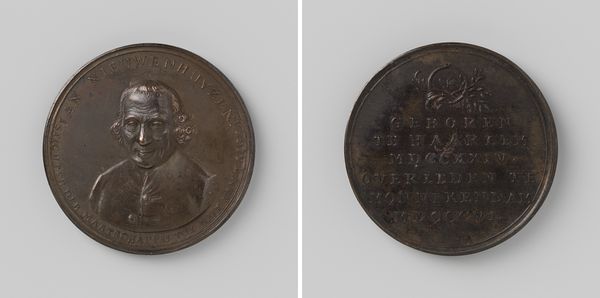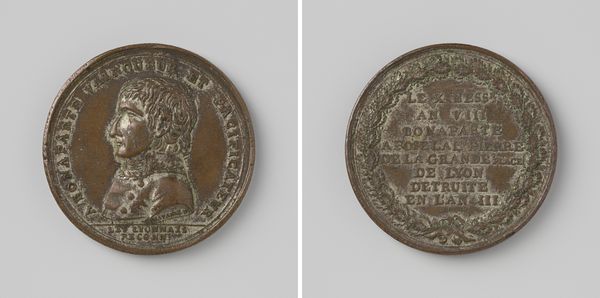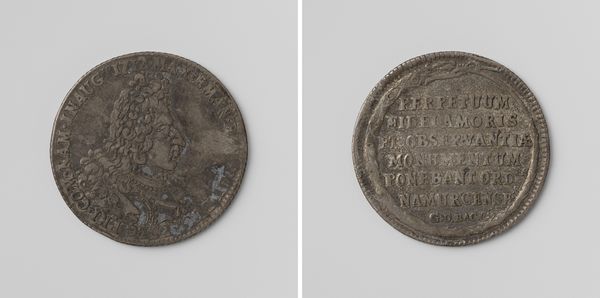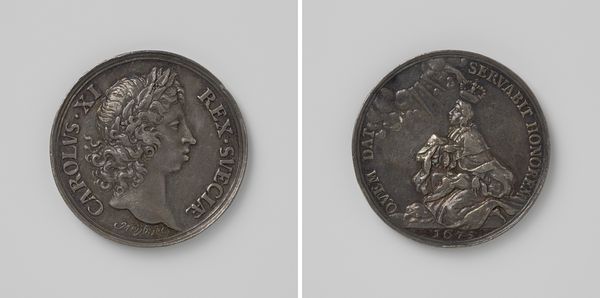
Inhuldiging van Willem I Frederik als koning der Nederlanden te Brussel 1815
0:00
0:00
metal, relief, sculpture, engraving
#
portrait
#
neoclacissism
#
metal
#
sculpture
#
relief
#
sculpture
#
history-painting
#
engraving
Dimensions: diameter 2.3 cm, weight 6.51 gr
Copyright: Rijks Museum: Open Domain
Curator: Here we have a metal engraving depicting Willem I Frederick's inauguration as King of the Netherlands in Brussels, dated 1815. Editor: My first thought? Austerity. The silvery gray tone, the crisp lines of the Neoclassical style—it speaks of an era defined by order and the solidification of power after the tumultuous revolutionary period. Curator: Precisely. Metal, often silver or bronze for commemorative pieces, signals importance and permanence. These engravings were widely circulated, playing a vital role in constructing a new national identity and bolstering royal authority post-Napoleonic era. Note how Willem’s profile, rendered in strict profile, evokes the visual language of ancient Roman emperors. Editor: It is an attempt at legitimacy through historical association, certainly, but who was the target audience? Was it simply an attempt to project authority to quell dissenting voices from different classes and regions unified under the Kingdom of the Netherlands? How effective could mass production of engraved objects like these really be in creating national unity? Curator: Mass production ensured these images permeated various social strata. Local elites acquired them as status symbols, while copies spread amongst the common citizenry through print culture, marketplaces, and trade. While not without dissent, it became a symbol of loyalty and pride to those aligning with the Crown. It became about constructing shared experiences, rituals and even emotions linked to statecraft. Editor: It’s compelling to see how something like this intersects with developing ideas about Dutch national identity during that period. But can we really assume its wide-spread emotional acceptance simply through its replication and distribution? Perhaps we are overstating the coin's efficacy as purely an instrument of control and instead recognize its symbolic place in broader discourses surrounding identity and statehood that remain conflicted. Curator: It wasn't solely about emotional acceptance; it was also about demonstrating the King’s influence within new bureaucratic systems being formed. As symbolic objects, such artifacts played crucial role in how this new configuration took root. Editor: A demonstration through both distribution and discourse…well said. Ultimately, these types of pieces give a snapshot into how a monarchy, emerging out of revolutionary times, worked to justify and immortalize itself through objects of art. Curator: Yes, and how these seemingly small items allow us to see and interrogate massive political shifts through an artistic lens.
Comments
No comments
Be the first to comment and join the conversation on the ultimate creative platform.

